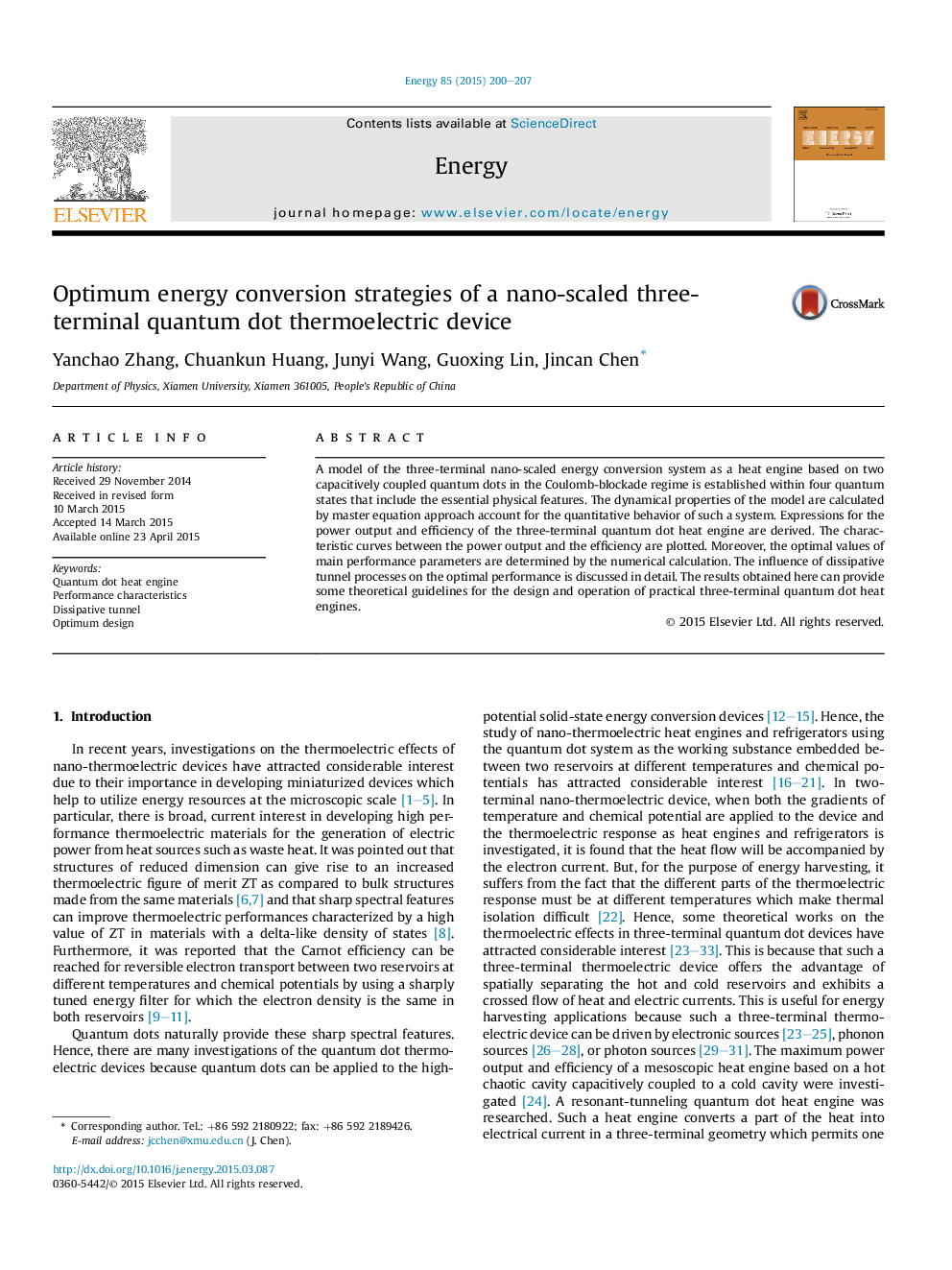| Article ID | Journal | Published Year | Pages | File Type |
|---|---|---|---|---|
| 1732070 | Energy | 2015 | 8 Pages |
•A new model of three-terminal nano-scaled quantum dot heat engines is established.•Expressions for the power output and efficiency are derived by master equation.•The general performance characteristics of the heat engine are revealed.•The effects of dissipative tunnel processes are discussed in detail.•Some important criteria of the parametric optimum design are obtained.
A model of the three-terminal nano-scaled energy conversion system as a heat engine based on two capacitively coupled quantum dots in the Coulomb-blockade regime is established within four quantum states that include the essential physical features. The dynamical properties of the model are calculated by master equation approach account for the quantitative behavior of such a system. Expressions for the power output and efficiency of the three-terminal quantum dot heat engine are derived. The characteristic curves between the power output and the efficiency are plotted. Moreover, the optimal values of main performance parameters are determined by the numerical calculation. The influence of dissipative tunnel processes on the optimal performance is discussed in detail. The results obtained here can provide some theoretical guidelines for the design and operation of practical three-terminal quantum dot heat engines.
